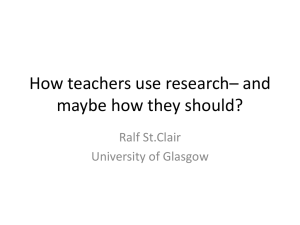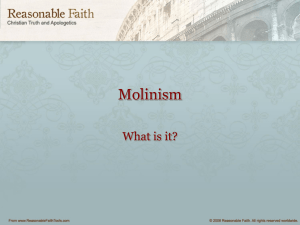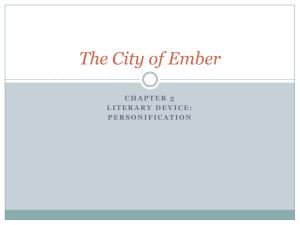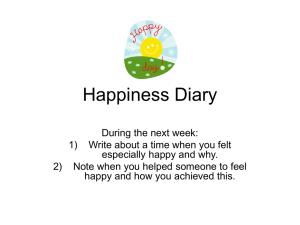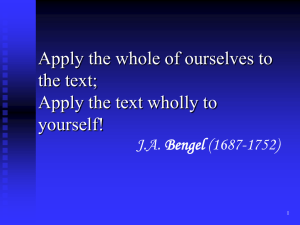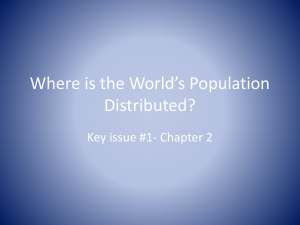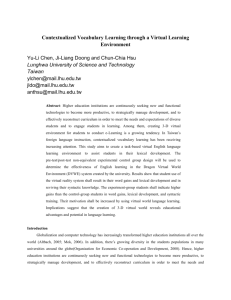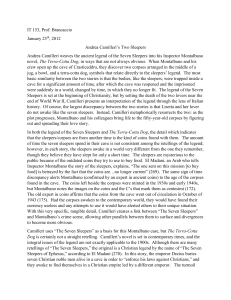The Good-Morrow – by John Donne
advertisement
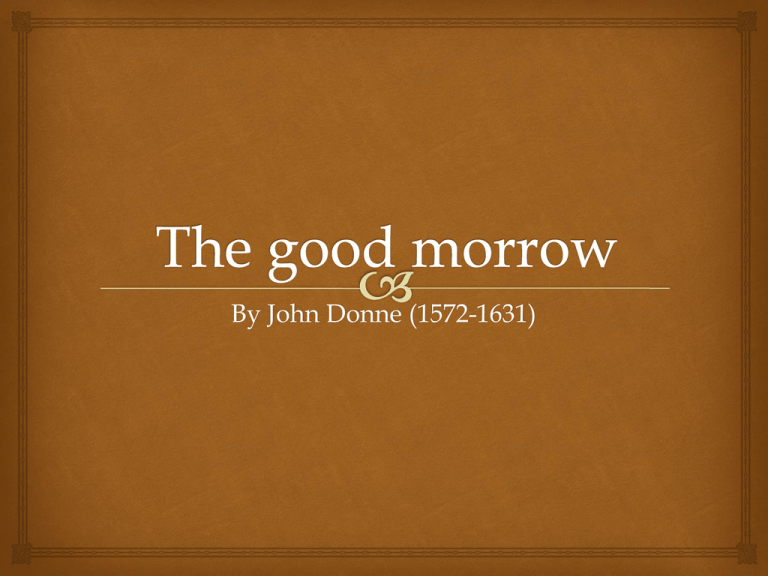
By John Donne (1572-1631) The Good-Morrow – by John Donne I wonder, by my troth, what thou and I Did, till we loved? Were we not weaned till then? But sucked on country pleasures, childishly? Or snorted we in the Seven Sleepers’ den? ’Twas so; but this, all pleasures fancies be. If ever any beauty I did see, Which I desired, and got, ’twas but a dream of thee. And now good-morrow to our waking souls, Which watch not one another out of fear; For love, all love of other sights controls, And makes one little room an everywhere. Let sea-discoverers to new worlds have gone, Let maps to other, worlds on worlds have shown, Let us possess one world, each hath one, and is one. My face in thine eye, thine in mine appears, And true plain hearts do in the faces rest; Where can we find two better hemispheres, Without sharp north, without declining west? Whatever dies, was not mixed equally; If our two loves be one, or, thou and I Love so alike, that none do slacken, none can die. Background Educated at universities of Oxford and Cambridge. Roman Catholic during early part of his life, but became an Anglican in 1615 and was appointed dean of St. Paul’s Cathedral from 1621 to his death in 1631. The poem is from John Donne’s 1633 collection “Songs and Sonnets”. Regarded by many critics as the greatest poet of the metaphysical school. Metaphysics – used language in new ways to express emotion and meaning at the same time. Poems deal with the relationship of humankind, God and the universe. Speaker and emotions Viewpoint of a lover as he arises in the morning and sees the face of his lover next to him. Subject of this passion could be Anne More, who became Donne’s wife. Different phases love goes through - passion of early relationship - to its growth to a spiritual experience and intimate bond. Themes Re-awakening Nature/completeness of lovers’ world Structure and diction Dramatic, lyrical, metaphysical poem. 3 stanzas each with 7 lines. Rhyme scheme = a b a b c c c … Syntax is complex and refined – periodic and balanced constructions. Mostly end-stopped lines – enhances orderliness of lines and crisp diction (words) Vivid language and religious references Title Good Morrow = good morning (to our waking souls) Line 1 - 2 Rhetorical Q of l. 1-4 - develops theme throughout Direct question to himself and subject, ponders way of life before falling in love I wonder, by my troth, what thou and I Did, till we loved? Were we not weaned till then? truth Infant’s gradual change from milk to solid food. Line 3-4 Euphemism simple, rustic and childish pleasures (like sucking mother’s milk But sucked on country pleasures, childishly? Or snorted we in the Seven Sleepers’ den? Slept/snored THUS, their slumber is compared to the long sleep of Seven Sleepers AND their bravery to how love has changed the speaker. Allusion Catholic tale – “Seven Sleepers of Ephesus” = 7 Christian children who hid in a cave to escape persecution during the reign of Roman Emperor Decius. They fell asleep and awoke 200 years later during the reign of Theodosius II. Q is answered Line 5-7 ’Twas so; but this, all pleasures fancies be. If ever any beauty I did see, Which I desired, and got, ’twas but a dream of thee. Being in love distorts one’s sense of reality – what went before was unreal. Any woman who had taken his fancy in the past “but a dream of thee” – a shadow Line 8-9 Love having given rise to a “Seven Sleepers” miracle And now good-morrow to our waking souls, Which watch not one another out of fear; Personification Apostrophe Line 10-11 Love can outweigh all other emotions/feelings and be as enduring as lovers want it to be. For love, all love of other sights controls, And makes one little room an everywhere. Personification Only they exist in the room where they lay and their room is the only realm which exist in the universe. Hyperbole What seems small at the outset can contain a universe once opened. Line 12-14 Conceit (far-fetched comparison between two unlike things) – two lovers to the discovery of new worlds Intimate, spiritual bond Let sea-discoverers to new worlds have gone, Let maps to other, worlds on worlds have shown, Let us possess one world, each hath one, and is one. Love is so great he feels he has no need to explore other worlds – others can explore for he has found what he was looking for. Passion often felt at the beginning of a love story – nothing else seems to matter. Line 15-16 When the speaker looks at/into his lover’s face, it’s like looking into a mirror – they have become so close that it seems they are the same. My face in thine eye, thine in mine appears, And true plain hearts do in the faces rest; Personification Pure Line 17-18 Metaphor Eyes – as wide-ranging and wonderful as the hemispheres of Earth. Where can we find two better hemispheres, Without sharp North, without declining West? Superior to geographical ones, lack coldness (sharp North) and sunset (declining west Rhetorical Q and Personification North symbolises bitterness and discord. West symbolises dying. Hyperbole The lovers’ world does not contain these “directions”. Line 19-21 Again portrays how their love has grown to the point of being like one person. Whatever dies, was not mixed equally; If our two loves be one, or, thou and I Love so alike, that none do slacken, none can die. Fade/lessen Love is enduring and will continue growing – Conquers all.
